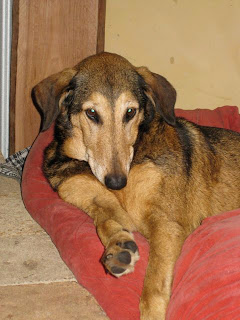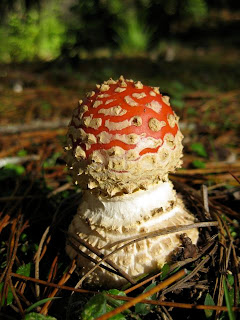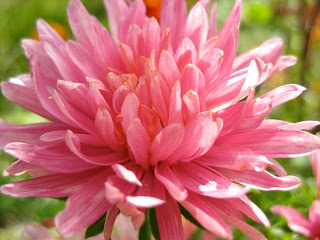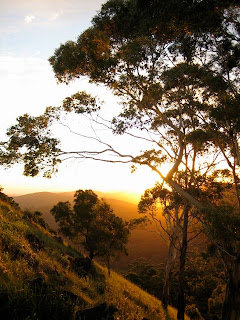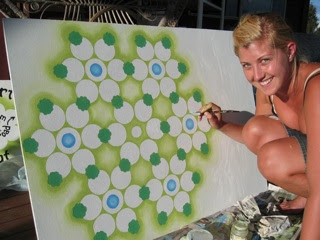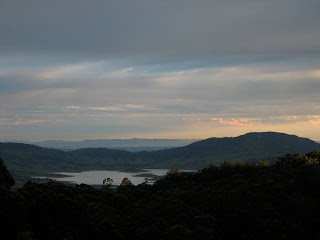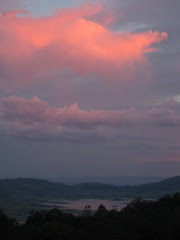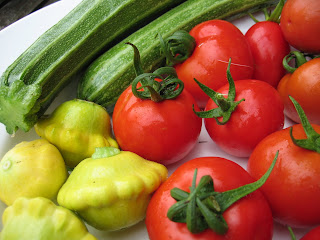
I recently attended a Biodynamic Forum on the economics of farming. Christopher Houghton Budd was the guest speaker and he presented some great information on how (farm) economics could be structured to provide a social, environmental and financial win.
Some of the key concepts were:
- Land has no monetary value
- Separate accounts for farm and non-farm activities
- True Pricing
- Life's Work
- Price Takers
- Corporate structure as a reflection of human activity
- Trim Tabs
- Trusts vs Companies
Land has not monetary valueThe concept here is that because land cannot be created, it is much like the sun, water, air and should have no monetary value. We can of course buy and sell the things we create from our own work, including things that result from working the land, just not the land itself.
This has an interesting consequence for farming, which is that farmers would not have to buy or rent land to grow their crops and so the cost of producing food would drop.
Following on from this was the idea that if land no longer changes ownership just because you are related to the previous owner or because you have more money that somebody else, then how should it change hands or more accurately custodianship.
One suggestion was that those best in the know ie knowledgable peers, are in the best position to allocate resources so that they are made best use of. In this case, farmers would choose who next to allocate a newly vacated piece of farm land. And that this farm land could never be sold off for the money value and then developed into something else.
This may sound idealistic, however I can imagine farmers, without a child willing to take on the farm, who might be willing to donate their land to a "trust" which would allocate the land to an up and coming farmer. Particularly if they have spent their life developing their farm, building the fertility of the soil, getting their herd just right. I'm sure they would rather see their farm continue to be worked and loved than have it sold off for the dollar value and developed.
And this can be started one farm at a time... I know that I will be!
Separate accounts for farm and non-farm activitiesTypical farming activities were scrutinised for whether or not they truly were farming activities.
- Anything that occurs off-farm is not farming eg. selling produce
- Anything that is value adding is also not farming eg. making yoghurt from milk
- Only the work involved in creating the primary product is farming eg. dairying for milk
It was recommended that farming and non-farming activities be accounted for separately in order to fully understand the economies of each. And in better understanding these activities, to be in a better position to make good decisions. Often by combining the accounts, it is not obvious that the non-farming activities are subsidising the farming activities.
True PriceThe true price for something is the price required to stay in business until the item can be sold again. Therefore the true price for food is the amount that allows the farmer to stay in business until they are able to grow more food (without harming the environment).
It is also more likely that if people knew that the true price was being charged that the practice of shopping around and price cutting might be eliminated as that would mean that the customer were not paying enough to cover the costs of the food. Over charging would also be eliminated as this would be unnecessarily taking from somebody else. This obviously depends on mutual trust and respect and a recognition that each person is doing their Life's Work.
Life's WorkImagine if you were given the money you need to live upfront each year and then allowed to decide whatever it is you wanted to do for that year.... no pressure. After spending a few weeks on the beach (!) what would you do... you can do anything you want. Now imagine if everyone were doing exactly what it is they wanted to do -- their Life's Work. What would the world be like? Also, would you want to undercut somebody if you knew that what they were offering was part of their Life's Work? Would you overcharge somebody for something when you know that what you are offering is really an expression of what you wanted to do anyway?
Price TakersAt the NSW Farmers Association meeting, it was very evident that most farmers are bowed under the pressure of being "price takers". This means that they cannot set their own prices but must accept what the market will offer them, usually far too low. Farmers often receive less than 10% of the price that we pay in the shops, but they have borne all the risk in producing it. This is a long way from the concept of the True Price.
Unfortunately because most farmers sell through central markets or through the major supermarket chains they are locked into being price takers. It is only when they can connect directly with the people who will eat their food that they have a chance of setting a true price, which mean they are neither a price taker or giver.
Company StructureThe company structure is just a mirror for our own development. As such the excesses of the capitalist system are not inherent in the system but a reflection of where we are at as a society. In some ways these excesses are necessary to go through, just as a teenager needs to rebel before coming back to a sustainable position. However this unsustainable period does need to end and it is time for us and as a reflection of us, the capitalist system, to grow up!
The company structure has come under a lot of scrutiny and criticism by many that are unhappy with the obvious harm that arises because Directors and shareholders are able to dodge responsibility behind the limited liability.
Companies however are a very effective way of linking people with initiative or ideas and little or no capital to people with capital or the means to put the ideas into reality, but no initiative.
In the talks over the weekend it was discussed how the company structure could be modified with Trim Tabs to make it function equitably while still retaining all the positives that come with it.
Trim TabsTwo main trim tabs were discussed. The first was to disassociate fully the ability for shareholders to vote. Therefore full responsibility for ensuring the development of the idea into reality is down to the Directors.
Another way of achieving this is that an associate organisation that is certified under the Associative Economic Guarantee Mark is created that has majority votes. It is there simply to ratify agreements between directors and shareholders, but not to set direction itself. This changes the typically competitive relationship between the directors and shareholders into a collaborative one.
A third trim tab discussed in Chris' book "The Right On Corporation" was that while shareholders are limited in their liability (hence limited liability company) they are not currently limited in the profits they receive.
Trusts vs CompaniesThere was talk about the role of Trusts in holding land for common good and the like. My understanding of Christopher's view point is that although Trusts are often set up in perpetuity, there are many precedents for the charter being overridden. Further people can easily become complacent in Trusts and so the management and running of Trusts can become ineffective.
A company on the other hand is explicit in saying that nothing can be taken for granted and that the values and goals will only be achieved by constant reappraisal and action towards them. Also, because a company has at least some profit motive, the impetus to keep the management and running effective is much greater. Finally, if the Trim Tabs described above are used, this makes the company a very effective tool for collaboration rather than competition.
Some of the discussions were quite challenging, and the summary I've given probably doesn't do it justice, but if you'd like to ask me about it, I'd be happy to go into more detail with you. You can also try their website: http://www.ae-institute.com/
 Well, the time has finally come for me to wave goodbye to Imago Forest. I’ll be leaving shortly to continue my world tour (next stop Auckland) so, sadly, this will be my final post on the farm blog.
Well, the time has finally come for me to wave goodbye to Imago Forest. I’ll be leaving shortly to continue my world tour (next stop Auckland) so, sadly, this will be my final post on the farm blog.  Animals aside, Mother Nature has served up some spectacular weather for our delectation on this hilly outcrop. Being able to peer out over the mountains from the comfort of the yurt and witness some magnificent electrical storms has been a joy. Possibly the most impressive of nature’s feats to this city slicker however has simply been the rate at which our veggies have grown. I had no notion whatsoever of what went into cultivating those juicy veggies that are on offer in abundance at the supermarket, so seeing our crops go from seed to plate in a matter of weeks – powered by nothing but sunlight, rainwater, well-prepared soil and bit of good old fashioned hard work – has been fascinating.
Animals aside, Mother Nature has served up some spectacular weather for our delectation on this hilly outcrop. Being able to peer out over the mountains from the comfort of the yurt and witness some magnificent electrical storms has been a joy. Possibly the most impressive of nature’s feats to this city slicker however has simply been the rate at which our veggies have grown. I had no notion whatsoever of what went into cultivating those juicy veggies that are on offer in abundance at the supermarket, so seeing our crops go from seed to plate in a matter of weeks – powered by nothing but sunlight, rainwater, well-prepared soil and bit of good old fashioned hard work – has been fascinating. 











